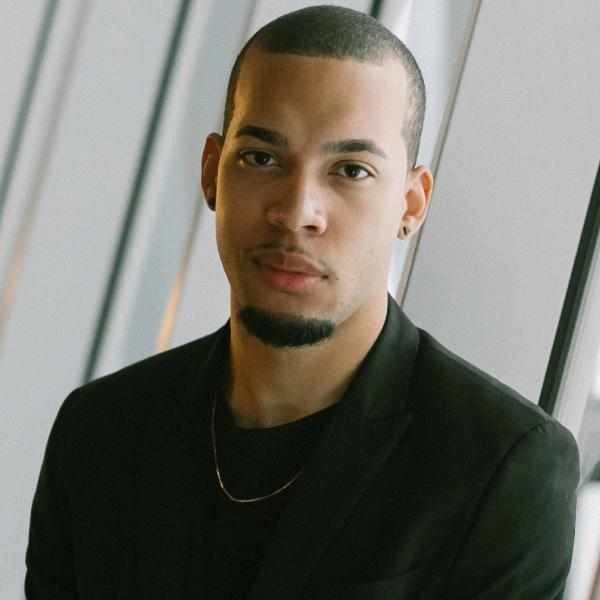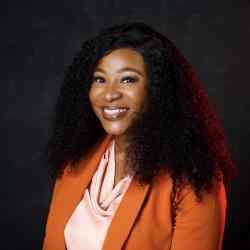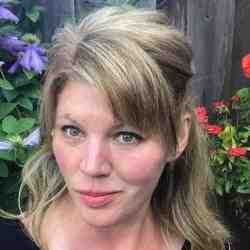Introduction
Daquan unleashes the full genius of underestimated communities and activates a hive of activity and exchange, proving that youth are at their best when they actually build things, including small businesses, their own confidence, and a mindset of “future-readiness.”
L'idée nouvelle
Daquan believes that “schools serving Black, Latino, and low-income students should be engines of innovation and economic opportunity.” And yet without a specific framework to identify, elevate and provide ongoing support to these underestimated youth, institutions can be just as likely to stifle their creativity and genius, stunting students’ future prospects.
Daquan unleashes a whole new vision, and through a new mode of interacting brings a new set of partners, resources, and energy to youth-serving institutions. Through WeThrive, Daquan engages teachers, and instructors of schools and community organizations to recruit students, as young as 13-14 years old and tap their entrepreneurial energy, promote the development of problem-solving habits, and cultivate self-confidence. Youth-serving institutions in more than 20 U.S. cities (and growing) make a concrete set of changes that imbue the community with entrepreneurial energy and creativity, where young people make and do things, gaining skills and intrinsic motivation that serve them for life.
Daquan simultaneously models a new approach to creating an engaging learning culture as well as a model for youth entrepreneurship training that actually works. And through his work with WeThrive he’s making sure both models are deployed widely, with replication taking off across the country. As this approach becomes embedded in more and more transformed learning cultures, WeThrive is effectively substituting the comfortable, rote, and restricted structure of our current system of engaging youth for a holistic, entrepreneurial, and energetic model that cares for the whole person and helps young people thrive.
Le problème
The majority of children from low-income families will remain in the bottom income quintiles as adults. Safety, structure, and control have become the guiding principles for too many institutions in our most economically disenfranchised neighborhoods. As a result we stifle creativity and abhor chaos. These goals have some merit, achieving them unfortunately too often comes at the expense of nurturing a sense of creativity, curiosity, independence, and confidence. The rich potential of these overlooked communities is rarely unlocked.
Silver-bullet, education enrichment programs – many of them focused on entrepreneurship – have sprung up all over the country, and yet most fail to produce meaningful changes, especially over the long term. Daquan believes that the reason so many fail is that most are either merely conceptual or too granular, marching students through content standards in environments that expect them to be still and quiet rather than passionate and creative. And in either case, most enrichment programs today continue to focus most of their attention on already successful youth.
Young people everywhere require and deserve interventions that inspire them early and support them all the way to career success. But for whole swaths of society, youth-serving institutions and their content are not dynamic, creative, nor tailored to student needs, and teachers lack the high-engagement, culturally competent approaches and assessment tools to help every student find success on their own terms. As a result, too many students leave school frustrated and discouraged, and even more graduate only to realize that they lack the high-level skills to compete. Only 15% of low-income high school students earn an on-time college degree, less than a quarter of the rate for affluent families.
Without a change, Black, Latino, and low-income students face a cultural and income-based disadvantage to charting pathways to upwardly mobile careers in the technology, engineering, finance, and business management sectors. To gain access to rewarding careers, they need to start building professional networks that include role models, mentors, and a support system of trusting peers at a younger age.
And yet, the current networking model is stale. Students are taught to exchange business cards instead of the importance of building sustainable relationships, or to format a resume rather than seek out challenging experiences. To build aspirations that are both realistic and bold, young people need programs that channel their passion, interest and authenticity into practical pathways that produce real-world results. Once they get the job of their dreams, they need not only STEM content knowledge, but also the capacity to assess problems, learn from failure, and put new solutions in action – the traditional skill set of the entrepreneur.
Helping individual kids who have fallen behind isn’t a systems-changing solution. To illustrate this point, Daquan uses the metaphor of a relay race, saying, “young people from under-resourced communities are getting the baton in last place, and interventions are attempting to solve the issue simply by training these kids to run at the same speed as the person in first place.” The core problem here is that at best, this ensures the gap will not grow further. Rather than change the players, Daquan knows that we need to change the game.
La stratégie
Daquan believes we must create an entire new set of learning systems, created by the community for the community. To close the vast gaps of opportunity that have emerged in our education system and that limit economic mobility, Daquan’s comprehensive framework shows how anyone can create empowering youth cultures, recruit a core group of adults as champions for entrepreneurial education, roll out new curriculum tools across the disciplines, and physically transform classrooms into modular Co-Learning Spaces where advisors (teachers) facilitate the innovative work of entrepreneurs (students).
This innovative model transforms learning cultures and, through hands-on experiences, unleashes the potential of each child. Daquan believes in education as a constellation of “perfect moments,” which he describes as peak, memorable experiences that you know – even in the moment – are transformational. For him, one such moment occurred when he was 7 years old and was able to personally make enough money to buy a toy his mom had said was out of the question. “I bought that toy!” For another kid, it might be breaking her school’s record for the fastest mile. In either case, it’s something that you can tokenize and “lock it in.” This is important because, as Daquan points out, you can’t teach grit or perseverance. It needs to be practiced, internalized and habitualized. Perfect moments are points that you can’t turn back from. For many young people, hosting their own event or selling a product they came up with can be one such perfect moment.
So how can all kids have perfect agency moments as part of their normal school day? Daquan started piloting his approach through an after-school program at a community center in Boston in 2010. Here students learned how to identify problems within their lives and communities; built and delivered solutions collaboratively with peers and target audiences; and gained traction on their solutions by building social capital and positive support systems. This process, beginning with mindfulness and ending at collaborative strategy, showed students how they could harness the chaos around them to transform the world as they know it.
While that initial proof of concept was developed as an after-school program, Daquan then needed to know, “How does one shift youth learning culture from permission-seeking to empowering, and at scale?” To do this, WeThrive moved past the initial hyperlocal approach and embedded the model inside many different schools, all at once. To compliment the after-school program and to effectively embed the new empowerment mindset, they trained teachers as classroom Change Agents and worked with community partners like Aspire Public Schools and My Brother’s Keeper. Their model today emphasizes working with middle schoolers (13-14) before habits and identities are too fixed. All students participating in the program (2,000+ nationwide this year so far and growing) build a team and launch an enterprise, for example Buffalo Bully Busters, an app to alert teachers when students are being bullied, or Political Awareness, which ran campaigns and events to assist students in registering to vote and choosing the right candidate who represents their interests. By guaranteeing every student starting out knows she will start an endeavor, and not just pitch an idea or maybe win some funds, WeThrive is unlike any other young entrepreneurship organization. And importantly, they simultaneously work to address the broader culture and change the fundamental interaction between youth and adult.
Teachers are trained in the model, given the title Change Agents, and can access bi-weekly peer support offerings (and even more resources online via the WeThrive platform). Change Agents can also access WeThrive’s corporate database to help facilitate links between students and potential mentors in the local community. This comes in handy when students, using WeThrive’s Social Capital Module, identify topics on which they still need guidance and determine what types of people would be most helpful to plug those knowledge gaps. When it comes time for young people to launch their first initiatives, WeThrive can even provide small but catalytic investments of seed money, as necessary. Upon launch of their changemaking endeavor, young people then have the option to join the Alumni Portfolio, which continues to identify local opportunities for the growing local network to contribute to positive change. This youth-focused structure effectively allows for meaningful alumni engagement amongst youth changemakers as well as a national scaling strategy.
WeThrive not only creates curriculum that is standards-aligned (it fulfills the graduation requirements for International Baccalaureate and Career and Technical Education Schools), but also strives to create new standards that measure future-readiness and align with the skills projected to be in demand for tomorrow’s economy. On top of that, expectations of school and community partners include things like whether young people – through their ventures – are involved in their community, if policies are in place allowing student sales on campus, and if the school has invested in physically offering at least one Creative Space and one School Store within each school. WeThrive has successfully grown to more than twenty major cities, including New York, NY; Mobile, AL; Denver, CO; Detroit, MI; and Los Angeles, CA. Across those cities, this year they will activate 6,000 young changemakers. Based on current trends, 81% will still be running their initiative (or start a new initiative) one year later.
This year, WeThrive is projected to continue the 4-year trend of 100% growth since last year, with programming on both coasts and around the country. In the next 5 years, WeThrive will have institutionalized a self-sustaining seed fund at a district-level within more than 25 districts. The Alumni Portfolio, the primary vessel by which youth will take the helm of solutions within their communities, will be active within more than 100 communities nationwide. Within each community that has an active Alumni Portfolio, more than 80% of youth within that community will identify as changemakers who can improve their own lives and communities, after 3 years of operation. Demo Days, which not only serve as a community-wide celebration, but also a formal progression of youth into the Alumni Portfolio each year, will happen each Winter and Spring, eventually becoming teenage milestones like homecoming and prom.
By sharing their tools and supporting the network of partners deploying their model, Daquan increasingly views WeThrive’s role as creating the wider ecosystem within which this new entrepreneurship model plays. Therefore, they’ve created a robust online platform where any youth-serving organization can access their playbook, so long as they share what is working for them, too. Daquan chose this open model because he saw that his system will only work when all students can own their respective projects and pave their own path to success without constant supervision. Realizing the difficulties of trying to personally deliver and spread this model to every school, they stepped back to intentionally decentralize and rely more heavily on partnerships with those already in the communities.
As more and more communities connect with this work, WeThrive gets closer to realizing its vision of a world where every young person is provided with the skills, resources and most importantly the practice it takes to succeed. Daquan is encouraged by how quickly this change will come about, citing the earlier trend in STEM education and how computer labs (akin to his School Stores and Creative Hubs) are now fixtures on school campuses, so much so that now no one would be surprised if their 8 year old cousin could build a mobile app. Only what Daquan is normalizing is the expectation that all young people build and launch something, and that in so doing all underestimated youth reach their potential.
La personne
Daquan grew up as the only child of a single mom living between New Rochelle and Mount Vernon, New York. At 7-years old, when his mom told him no to the Dragon Ball Z toy he wanted, he grabbed a stack of Pennysavers, a free newspaper, and began selling them to anyone who would buy them. Within a week he had his toy. He gets his resourcefulness, in part, from his mom, who later used his grandparent’s address to keep Daquan enrolled in a well-resourced public school a few minutes (and worlds) away in New Rochelle. Daquan’s mother’s goal was for him to have the very best chance possible at succeeding despite the oppression she faced growing up. But the short 12- minute bus ride also showed young Daquan the artificial divides we’ve created that can enable or hinder opportunity.
In the summer of 2006, when Daquan was 14 years old, he and his mom found themselves homeless. Daquan spent his nights living out of their Ford Explorer, and his days at a summer program for gifted students hosted by Goldman Sachs. Graduates of the program were promised a full ride to college. Though the offer of a full ride was rescinded as the Great Recession hit, Daquan’s most vivid memory from this period was of a specific restless night. As he tried to settle down, he felt hopelessness, despair and fear welling up within. In this moment, he decided that he would not let this situation define him nor defeat him. Not only did he promise himself that he would overcome and become a success, he vowed to help all those kids like him to become powerful and successful, too.
When Daquan returned to school in the fall he launched a business selling PopTarts to his schoolmates. He laughs now at the notion that, compared to what was in the school vending machines, these PopTarts were considered healthy options, and at the fact that he had a paid sales team of other students netting more than $1,000/month in revenues. Later, as an undergraduate at Babson, he also founded Jossle – a campus promotions agency which amassed a nationwide network of college students and executed successful campaigns for large brands such as Zipcar, Uber and KarmaLoop. With Jossle, he not only worked with large brands but also managed an organization with a sales team of three, account management team of four, and a client base of more than a dozen. And yet, Daquan notes, “I never saw entrepreneurship as ‘selling things.’ Rather, to me an entrepreneur is someone who sees obstacles and opportunities, but to their advantage.”
Or to the advantage of others. As a way to fulfill the promise he made as a 14-year-old, Daquan wasted no time and began achieving his vision during his freshman year of college. He got involved with existing programs that Babson ran with kids of similar backgrounds, but Daquan quickly realized he was one of the very few Babson students who had grown up in and understood that environment. Along with teams of other undergrads whom he recruited, he was able to pilot the early WeThrive program at a local recreation center while he attended school. It was here – and in response to other college students’ instincts to control the process – that he reflected on the power of chaos in his life, noting that he “deeply believes that because [my] childhood had so many challenges, it was so successful for [me]. The volunteers and teachers thought “under-resourced kids” were capable of less. My main goal then – and now – is to obliterate that stereotype.”

 Tile image
Tile image


